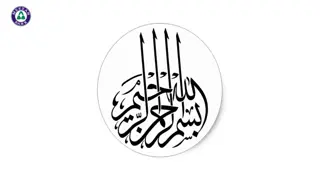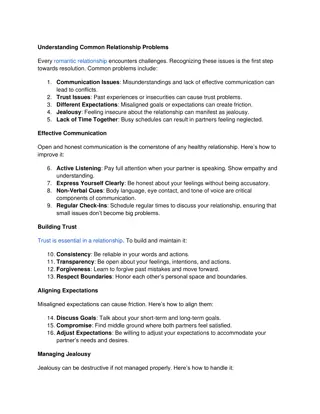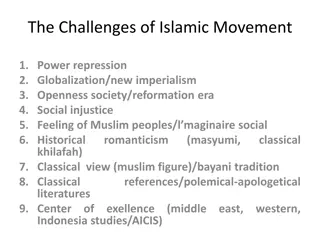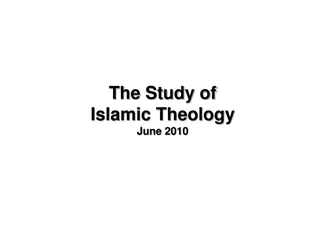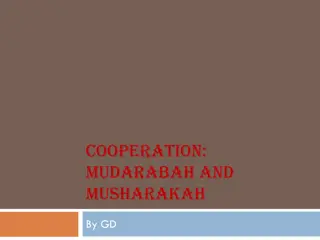
Fiqh Madhabs: Overview of Islamic Legal Thought by Dr. Huda Hilal
Explore the fundamental aspects of various Islamic legal schools of thought, known as Madhabs, including the Hanafi, Maliki, and Shafi'i Madhabs. Delve into the origins, teachings, and notable figures associated with each school, shedding light on their methodologies and sources of jurisprudence.
Download Presentation

Please find below an Image/Link to download the presentation.
The content on the website is provided AS IS for your information and personal use only. It may not be sold, licensed, or shared on other websites without obtaining consent from the author. If you encounter any issues during the download, it is possible that the publisher has removed the file from their server.
You are allowed to download the files provided on this website for personal or commercial use, subject to the condition that they are used lawfully. All files are the property of their respective owners.
The content on the website is provided AS IS for your information and personal use only. It may not be sold, licensed, or shared on other websites without obtaining consent from the author.
E N D
Presentation Transcript
Introduction to Fiqh The Madhabs: Schools of Islamic Legal Thought Dr. Huda Hilal Lesson 7 1 www.ayaatacademy.ca
Main Topics Zayd Sh fi anaf Madhab Madhab Madhab Awz Layth anbal Madhab Madhab Madhab Dh hir , & Jarir M lik Thawr Madhab Madhab Madhabs 2025-06-21 2 www.ayaatacademy.ca
anaf Madhab (703-767 CE) The founder Ab an faNu m n ibn Th bit ibn Z ibn Marzub n Studied Dialectics ( Ilm al-Kal m) first then Fiqh. Method Group discussion posing a problem, and asking his students to discuss and record (hypothetical Fiqh) . Excelled in analogy and the reason of the legal ruling, utility, objectives of Sharia. Sources of anafi Madhab (in order) Quran, Sunnah, consensus of the Companions, consensus of Muslim scholars, opinion of the Companion, analogical deduction, Isti s n (legal preference) Urf (custom). 2025-06-21 3 www.ayaatacademy.ca
anafi Madhab (703-767 CE) The students of Ab an fa Abu Y suf Ya q b ibn Ibr h m al- An r (d.182 AH) Mu ammad ibn al- asan ash-Shayb n (d.189 AH) Noticeable scholar in Hadith Studied Fiqh under Ab an fa 9 years Studied under Imam M lik Studied first Hadith Fiqh under Ab an fa Imam al-Shafi studied under him Chef judge in the reign of Abb sid Caliphate A tool for spreading his school He became one of the narrators of the book of Imam Malik: al-Muwa a 2025-06-21 4 www.ayaatacademy.ca
The Mlik Madhab(717-801 CE) The founder M lik bin Anas bin Amr bin Al- rith Studied Hadith under al-Zuhri who was great scholar. Taught Hadiths andAthar for forty years. Method Complied his famous book Muwa a The method of his teaching Hadith is one of two ways. Either to discuss with his students the implications of a Hadith or discuss with them the appropriate Hadith that might carry the solution. Sources of anaf Madhab (in order) Quran, Sunnah, practice of people of Medina, consensus of the Companions, individual opinion of a Companion, Qiyas, customs of Medina people, Isti la Urf (custom). 2025-06-21 5 www.ayaatacademy.ca
The Mlik Madhab(717-801 CE) The students of Imam Malik Abu Abdur- Rahman ibn al- Q sim Abu Abullah ibn Wahab Studied under his teacher, but he excelled in the deductive reasoning Studied under his teacher for twenty years He wrote his book in Maliki Fiqh, al- Mudawwanah. He was called Mufti, a formal title 2025-06-21 6 www.ayaatacademy.ca
The Minors Madhabs They were two: The Zayd Madhab: Zayd ibn Al ibn al- usayn Zayn al- bid n ibn Al ibn Ab lib (700-740 CE). . The Thawr Madhab: Sufyan al-Thawr (719-777 CE). Zayd was the distinguished scholars of Alawi family Teaching the Quran and Hadiths, for a jurisprudential questionHe would answer or to refer to other jurists The main scholar of Fiqh in the school of Hadith He opposed the Qiyas of Ab an fa 2025-06-21 7 www.ayaatacademy.ca
The Shfi Madhab (769-820 CE). The founder Ab Abdill hMu ammad ibn Idr s ash-Sh fi . Travelled to Madinah to study Fiqh and Hadith under Imam Malik. Muslim ibn Khalid al-Zanji authorized al-Shafi' to issue fatwas. At age 15. The founder He travelled to Yemen to teach. Studied under Imam Muhammad ibn in Iraq. Studid Laythi Madhab in Egypt. Method Combining (al-Maliki and al-Hanafi) and create his old Madhab (al-Hujjah) in Bagdad. In Egypt (different customs & new Hadiths) changed his Fatwas (al-Umm Book).the new Madhab 2025-06-21 8 www.ayaatacademy.ca
The Shfi Madhab (769-820 CE). Sources in Shafi Madhab Quran, Sunnah, Ijma (consensus), Individual opinion of a Companion, Qiyas that has evidences in the Texts, Istis b (linking), Urf (custom). The students of Imam al-Sh fi Ab Ya'q b Yus f ibn Yahya Al-Buwayt : the greatest scholars. He arranged the book of al-Umm. The students of Imam al-Sh fi Ab Ibr mIsm ' l ibn Yahy al-Muzan al-Misr : Mukhtasar al-Muzan . Al-Rabi ibn Sulayman al-Mur d : the main narrator of al-Sh fi . 2025-06-21 9 www.ayaatacademy.ca
The anbal Madhab (778-855 CE) The founder A mad ibn anbal al-Dhuhl . The greatest narrator of Hadith. Method To dictate Hadiths from his book al-Musnad, with the interpretations of the Companions. He encountered a jurisprudential problem, he would offer his opinion but without recoding. Sources of anbali Madhab (in order) Quran, Sunnah, consensus of the Companions, opinion of the Companion, weak Hadith, Qiyas (analogical deduction). 2025-06-21 10 www.ayaatacademy.ca
The Dhhir Madhab (815-883 CE) The founder D w d bin Al bin Khalaf al- hir studied Fiqh under Imam al-Sh fi , but he returned to study only Hadith under Imam A mad. Method became an independent scholar with a unique way of thinking based on the literal meaning of the texts Sources of al- hir Madhab (in order) Quran, Sunnah, consensus of the Companions, al-Mafh m (understood meaning). 2025-06-21 11 www.ayaatacademy.ca
The Jarr Madhab(839-923 CE). They were two: He studied all Madhabs, and followed Sh fi Madhab, then he created his own Madhab. He created his own Madhab, and wrote several books the most famous of it are the following: Book on interpretation entitled Jami al-Bayan Book on history entitled T r kh al-Rusul wa al- Mul k . 2025-06-21 12 www.ayaatacademy.ca


